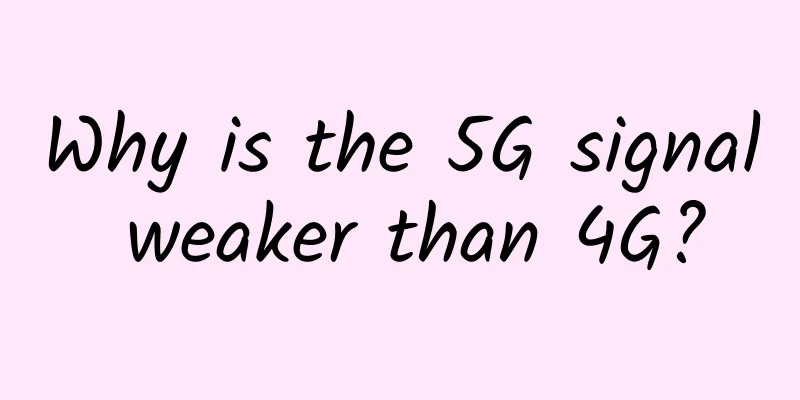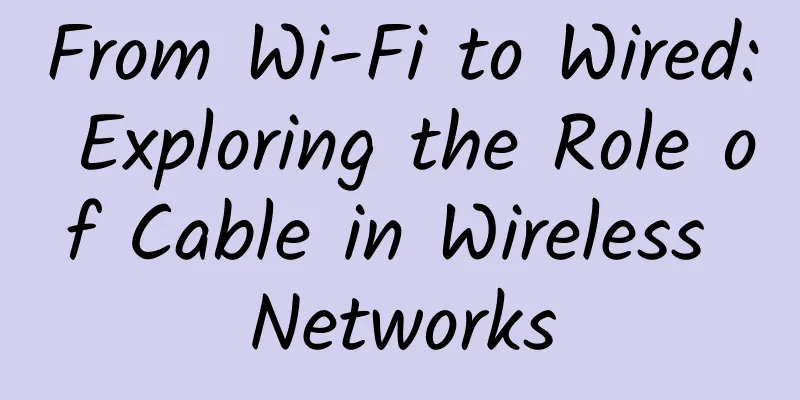Why is the 5G signal weaker than 4G?

|
The advent of 5G technology promises lightning-fast internet speeds and seamless connectivity. However, some users have reported weaker signals compared to previous 4G connections. This article aims to delve deeper into the reasons behind this phenomenon and uncover the factors that cause 5G signals to become weaker. Through research and analysis, we will explore the technical aspects and potential challenges that arise in the implementation of 5G networks. Why is the 5G signal weaker than 4G?The transition from 4G to 5G technology brings many advances, including higher data rates, lower latency, and greater network capacity. However, one common complaint from users is that 5G has weaker signal strength compared to previous 4G connections. There are several factors that contribute to this: 1. Frequency band: 5G networks use higher frequency bands, such as millimeter waves, to transmit data. Although these frequencies provide greater bandwidth and faster speeds, their shorter wavelengths make it difficult to penetrate obstacles such as buildings and trees. Therefore, signal strength weakens over shorter distances, resulting in weaker coverage. 2. Infrastructure Challenges: The deployment of 5G networks requires a major overhaul of infrastructure. Unlike 4G networks, which rely primarily on large cell towers, 5G networks rely on a dense network of small cell base stations. These small cells are installed on street lights, buildings, and other structures to provide coverage. However, the increase in the number of small base stations and their limited coverage may lead to coverage gaps, resulting in weak signals in certain areas. 3. Interference: The higher frequency bands used by 5G are more susceptible to interference from physical objects, atmospheric conditions, and even the human body. This interference can cause signal degradation, resulting in weak connections, especially in crowded urban environments. 4. Early stages of development: 5G technology is still in the early stages of development and deployment. As with any new technology, there will certainly be challenges and limitations at the beginning. As the technology develops, network operators are constantly working to optimize their 5G infrastructure and improve signal strength. FAQ: Is the 5G signal getting weaker everywhere?A: The strength of 5G signals depends on several factors, including location, network infrastructure, and deployed frequency bands. While some users may experience a weak signal, others may enjoy strong coverage, especially in areas where 5G networks are widely deployed. Will 5G signal strength improve in the future?A: Yes. As 5G technology continues to develop, network operators are actively working to improve signal strength and coverage. Ongoing infrastructure improvements, advances in antenna technology, and the deployment of additional small cells are expected to address current limitations and improve overall signal strength. Is there any way to improve 5G signal strength?A: While individual users have limited control over infrastructure, there are several steps that can improve 5G signal reception. These include ensuring a clear line of sight to the nearest cellular tower, minimizing obstructions, and considering using a signal booster or Wi-Fi calling options. In summary, the weaker signal strength experienced by some users in 5G networks compared to 4G can be attributed to a variety of factors, including higher frequency bands, infrastructure challenges, interference, and the early stages of 5G development. As technology advances and network infrastructure improves, these limitations are expected to ease, bringing stronger and more reliable 5G connections to users around the world. |
<<: Cool Knowledge: Learn about RF Antennas in One Article
Recommend
Detailed explanation: How did China Mobile perform in 2020?
[[390976]] Compared with China Telecom and China ...
Yecao Cloud: Hong Kong dedicated server from 299 yuan/month, Hong Kong VPS annual payment from 138 yuan
Yecao Cloud is a Chinese hosting company founded ...
Mini Program Dependency Analysis Practice
[[350074]] Students who have used webpack must kn...
In the 5G era, where will the 2G-based temperature and humidity sensors go?
[[349400]] With the construction of 5G network ba...
Why do base stations need to go to the sky?
Over the past few decades, mobile communication t...
How much do you know about Zigbee wireless connection?
Zigbee has a wide range of applications and can o...
Operational data of the three major operators in May: 5G has a unique outlook
Now in the motherland, more than 10,000 5G base s...
RackNerd adds 5 new data centers in San Jose, Dallas, etc., with 2G memory packages starting at $25 per year
Yesterday I received an email from RackNerd, sayi...
How to protect data in an increasingly insecure environment?
Protecting data is becoming increasingly difficul...
vivo HTTPDNS end-to-end experience optimization practice
In the information age, users' mobile applica...
Small router, do you really understand its structure?
There are four main types of routers in the netwo...
Improving the value of colocation data centers with DCIM
Today, as the popularity of colocation data cente...
The top five most popular network industry skills in 2018
In the rapidly evolving IT field, professionals a...
OneWeb launches 182 more internet satellites into orbit
According to foreign media, OneWeb's 36 Inter...
Kunpeng spreads its wings and Zhejiang has great potential | Kunpeng Application Innovation Competition 2020 (Zhejiang Division) briefing session is recruiting heroes!
At 14:30 on July 31, 2020, the Kunpeng Applicatio...









